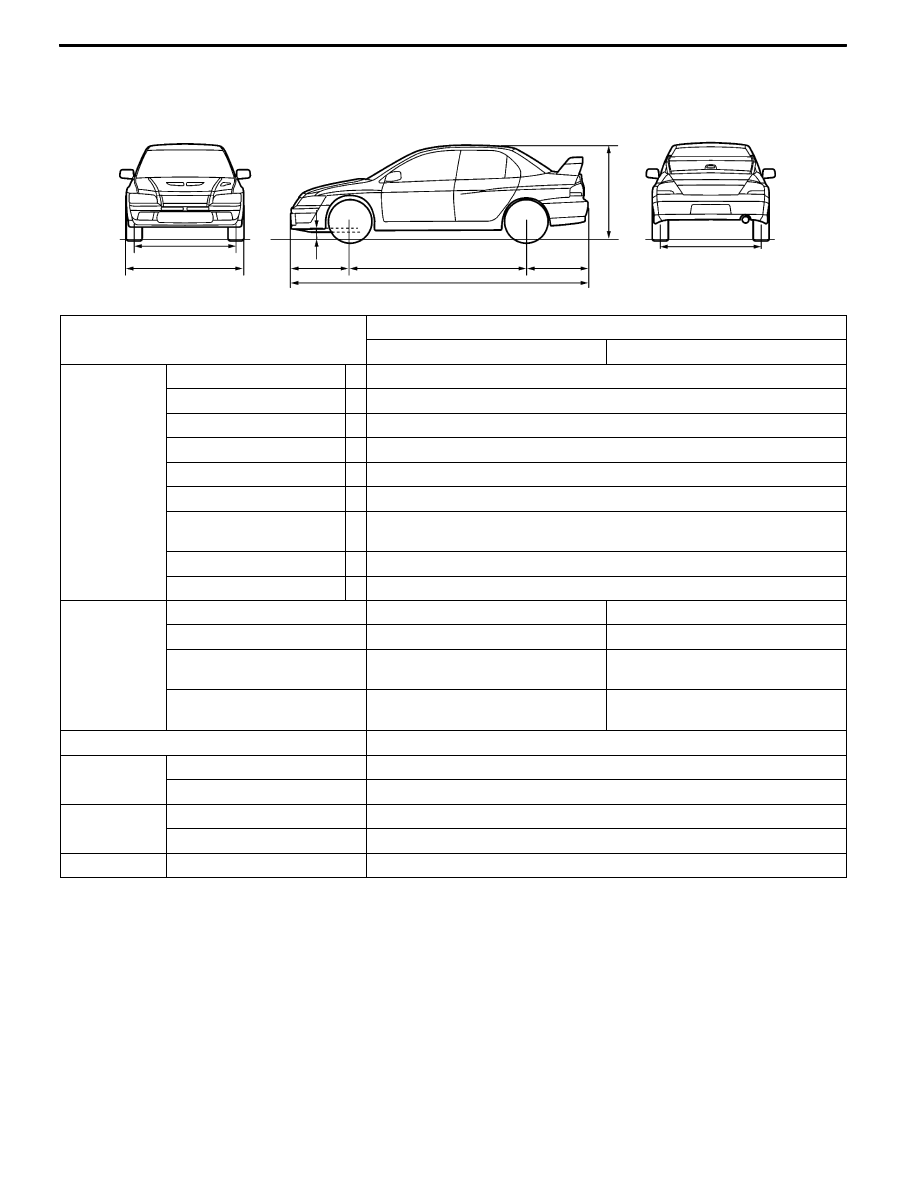Mitsubishi Lancer Evolution 7. Manual - part 141

GENERAL -
Major Specifications
00-17
MAJOR SPECIFICATIONS
1
2
3
4
5
6
7
8
9
Items
CT9A
SNDFZL/R
SNGFZL/R
Vehicle
di
i
Front track
1 1,500, 1,515
*1
dimensions
mm
Overall width
2 1,770
mm
Front overhang
3 895
Wheel base
4 2,625
Rear overhang
5 935
Overall length
6 4,455
Ground clearance
(unladen)
7 140
Overall height (unladen)
8 1,450
Rear track
9 1,500, 1,515
*1
Vehicle
i ht k
Kerb weight
1,320
1,380
weight kg
Max. gross vehicle weight
1,655
1,695
Max. axle weight
rating-front
950
970
Max. axle weight
rating-rear
705
725
Seating capacity
5
Engine
Model No.
4G63
g
Total displacement mL
1,997
Transmis-
i
Model No.
W5M51
sion
Type
5-speed manual
Fuel system
Fuel supply system
MPI
NOTE
*
1
: Vehicles with 17 inch wheels.